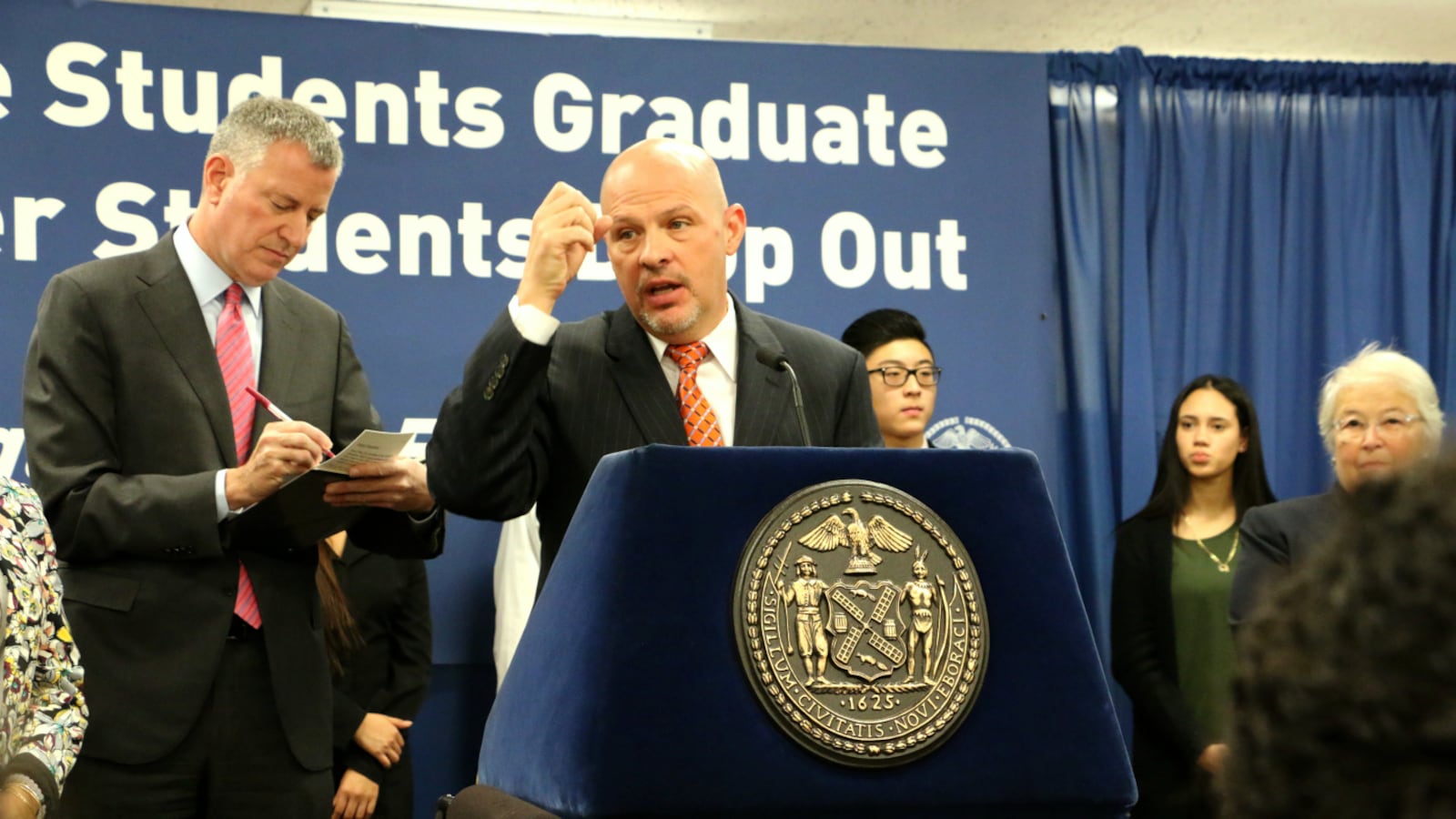Despite changes in state law and several attempts at overhauling teacher evaluations, New York City remains one of the most difficult places in the country to fire an ineffective teacher.
That’s according to a report released Thursday by the conservative-leaning Thomas Fordham Institute, which ranked New York City fourth out of 25 large, geographically diverse school districts in terms of how hard it is to fire low-performing teachers.
The findings offer another piece of evidence that the national effort to remove ineffective teachers through harsher evaluation systems — which have already been significantly rolled back in New York state — has not taken hold locally.
“We made this massive push to improve teacher quality,” said David Griffith, a co-author of the report, referring to efforts around the country to overhaul the way teachers are evaluated. “The bottom line probably hasn’t changed as much as people might think.”
The report assessed teacher contracts and state tenure policies and rated each school district on three key questions: Does tenure protect veteran teachers from performance-based dismissal? How long does it take to fire an ineffective teacher? And how easy is it to challenge a decision to dismiss a teacher?
New York City ranked as more favorable to teachers than Chicago, Los Angeles, and San Francisco’s school districts on those questions, but is still among the most challenging places to fire a tenured teacher in the country, according to the report.
The only question on which New York City did not receive a zero when it came to toughness on teachers: The amount of time it takes to fire a tenured educator. It takes two years of consecutive “ineffective” ratings to dismiss one in New York City, roughly a third of the time it can take in Los Angeles, in some cases. (In response to the report, New York City education officials said teachers can be removed for incompetence, even without two ineffective ratings.)
Still, the vast majority of New York City teachers rated ineffective are never fired — even those who have received that bottom ranking multiple times.
Out of 77 city educators who received two consecutive ineffective ratings since September 2014, 57 had cases brought against them, but only nine have been fired, according to state officials. (Nineteen of the 57 cases are still active, two were withdrawn, and 27 were settled. The results of those settlements were unclear at press time.)
City education department officials noted those statistics don’t account for the all the ways in which teachers can be removed for incompetence, and that teachers may leave the system before charges work their way through the full removal process.
In the 2014-15 school year, for instance, incompetence charges lead to 106 teacher “exits,” an education department official said, nine more than the previous year.
“We are using the tools at our disposal to recruit and retain great teachers and also to move those who shouldn’t be teaching out of the system,” department spokeswoman Devora Kaye wrote in a statement.
But when it comes to removing teachers who have received two ineffective ratings, Griffith said, the process can often keep school leaders from following through on firing a teacher.
“During those two years [in which teachers are rated ineffective] you have to do at least eight formal observations and teachers have the ability to challenge it during a grievance process that can take months,” he said. “And if you make a minor mistake, then the whole thing can be thrown out.”
Michael Mulgrew, president of the United Federation of Teachers, blasted the report, and said the focus should be on improving teaching conditions. “Hundreds of teachers depart the New York City public schools every year based on their professional performance – failure to maintain licensing requirements, disciplinary action and similar reasons,” he wrote in a statement.
“But every year thousands of teachers in good standing leave of their own volition because the system has failed to provide the supports they need to effectively help the students in their classrooms. That’s the real scandal that critics like the Thomas Fordham Institute ignore.”
Nationwide, job protections for teachers have been under increased scrutiny in recent years, and lawsuits have been filed from California to New York that claim leaving ineffective teachers in place can violate students’ civil rights — though the courts haven’t necessarily bought that argument.
The Fordham Institute’s Griffith said there is not one single policy lever that would protect quality teachers while allowing low-performing ones to be fired, but he pointed to the tenure process as one place for reform. (There’s been some recent movement on that front: Teachers can now be considered for the job protection only after four ‘probationary’ years, up from three.)
A focus on delaying tenure is in line with former Mayor Michael Bloomberg’s approach. His administration promised to move toward “ending teacher tenure as we know it” and oversaw a massive decrease in tenure approval rates.
Under current Mayor Bill de Blasio, who is considered more union-friendly, the education department has quietly started approving more teachers for tenure — though still far below pre-Bloomberg rates. Still, both administrations have held rejection rates essentially flat at 2 percent.
“To fix the process would require a lot of little changes,” Griffith said of the teacher tenure and removal process. “If it’s a lifetime guarantee of a job, the bar to getting it should be really high.”


